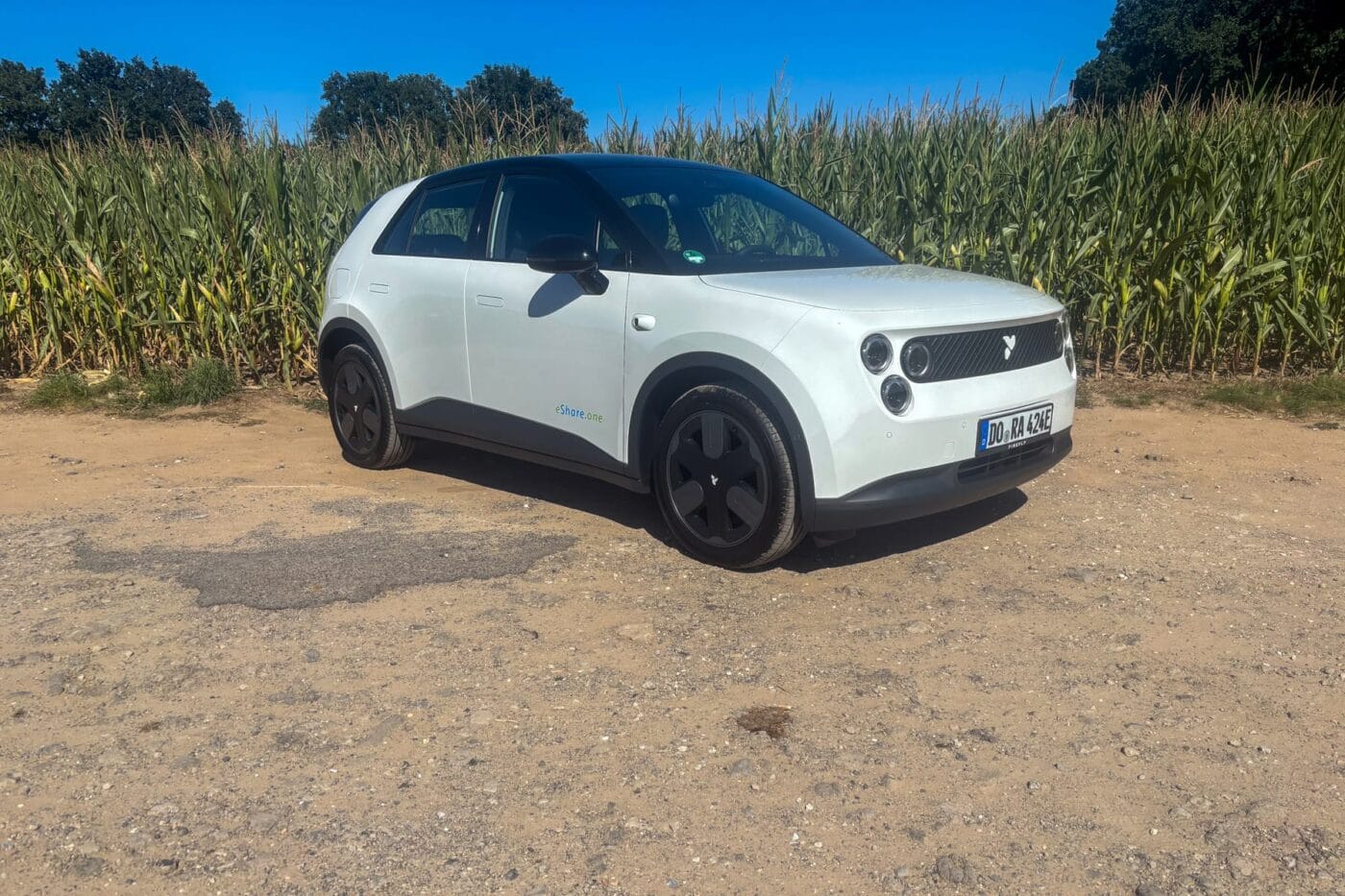
Testing Germany’s first Firefly: What Nio’s small electric car can do
It all started on 14 August, albeit on a small scale. On this day, Nio delivered the first vehicles of its Firefly brand in Europe in Norway and the Netherlands. The latter handover also featured a special case: the white Firefly did not go to a Dutch customer, but to a German one – eShare One from Dortmund. Founded in 2009, the company organises electric car presentations, roadshows, test drives, trade fairs and local e-mobility events, and also offers electric car rentals and car sharing (as a Flinkster network partner). The link to Nio is clear: seven vehicles from the Chinese manufacturer are already part of the eShare One fleet. That made it possible for Andreas Allebrod and his team in Dortmund to become the first German customers to receive the Firefly, even before orders were available in the country.
Strictly speaking, the white Firefly from eShare One is the second model in Germany: in June, the Federal Motor Transport Authority already recorded a Firefly in its registration statistics. That vehicle, however, is a pre-production model used by Nio at its German headquarters in Munich. The Firefly registered in Dortmund is therefore the first production model in Germany.
Shortly after the handover, eShare One provided the vehicle to electrive for an initial test. The car had covered just 380 kilometres, with Allebrod himself spending a few days familiarising himself with it before handing over the keys and access card.
Plenty of space in four metres
At first glance, the vehicle appears slightly longer than in the photos, likely due to its balanced proportions. At 1.78 metres wide, the Firefly is relatively broad for its size class. Anyone expecting a narrower vehicle from the images may be surprised by the actual dimensions. While four metres in length is unchanged, the Firefly does not look like a fragile small car but more a compact model that happens to be shorter.
The interior space is also closer to the classic VW Golf segment than a small car. Without a continuous centre console, the front feels open, and the distance between the driver’s and front passenger’s shoulders is noticeably greater than in a Hyundai Inster, for example. Adults up to 1.85 metres tall can sit comfortably in the rear, even when the driver’s seat is set for someone of the same height. The vehicle also offers a 404-litre boot, a 92-litre frunk, and additional hidden storage compartments inside. More on that later.
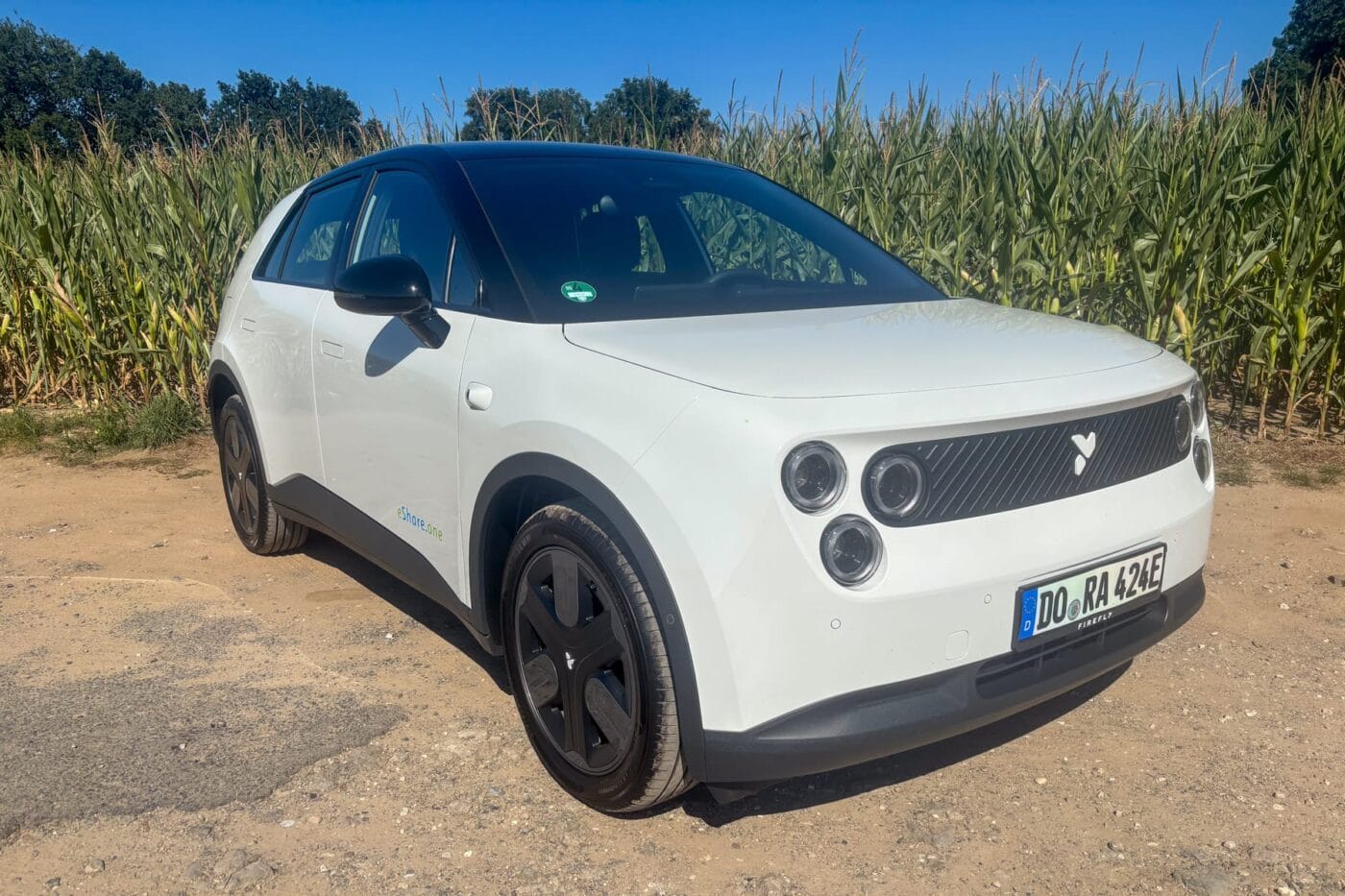
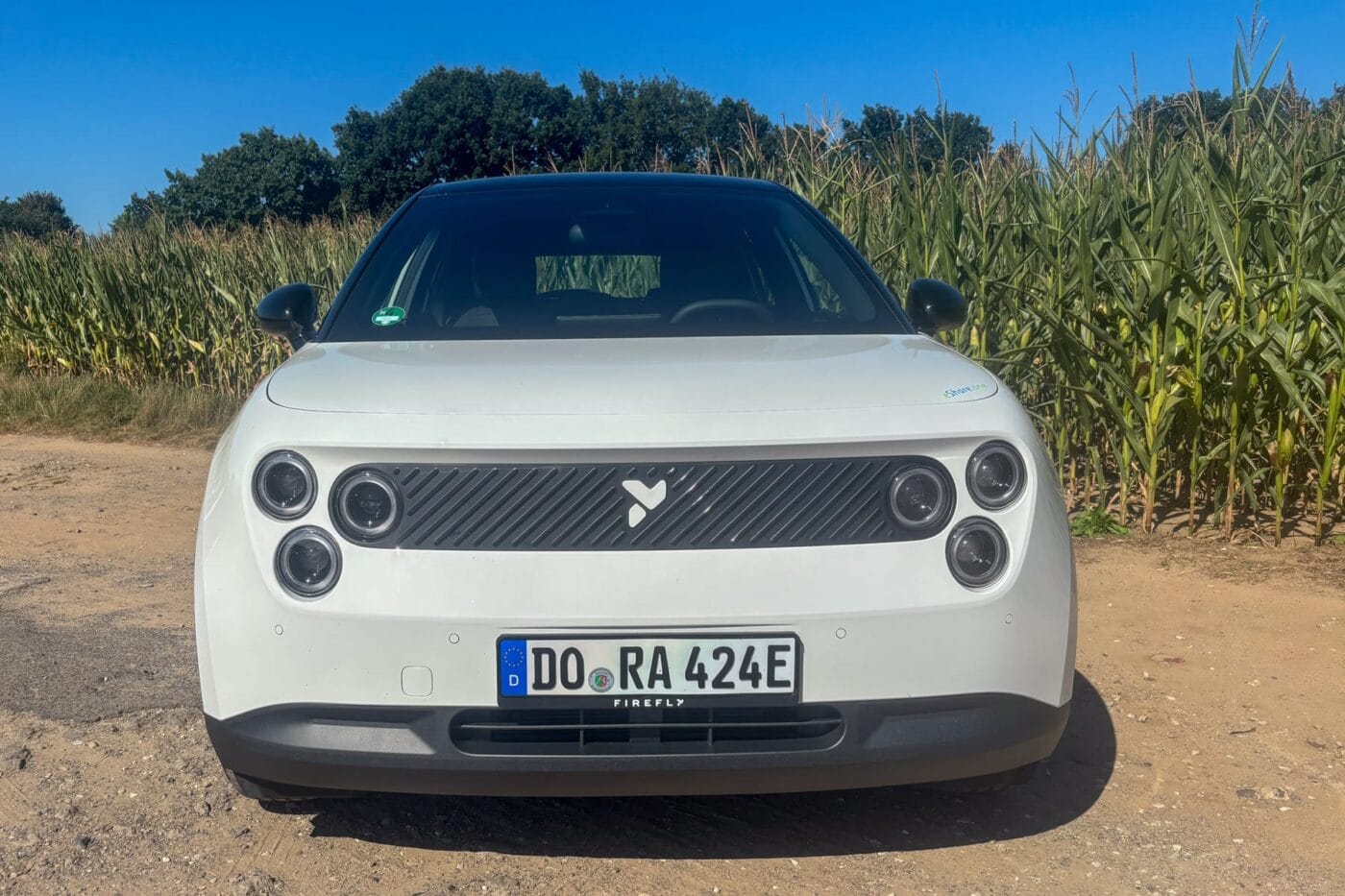
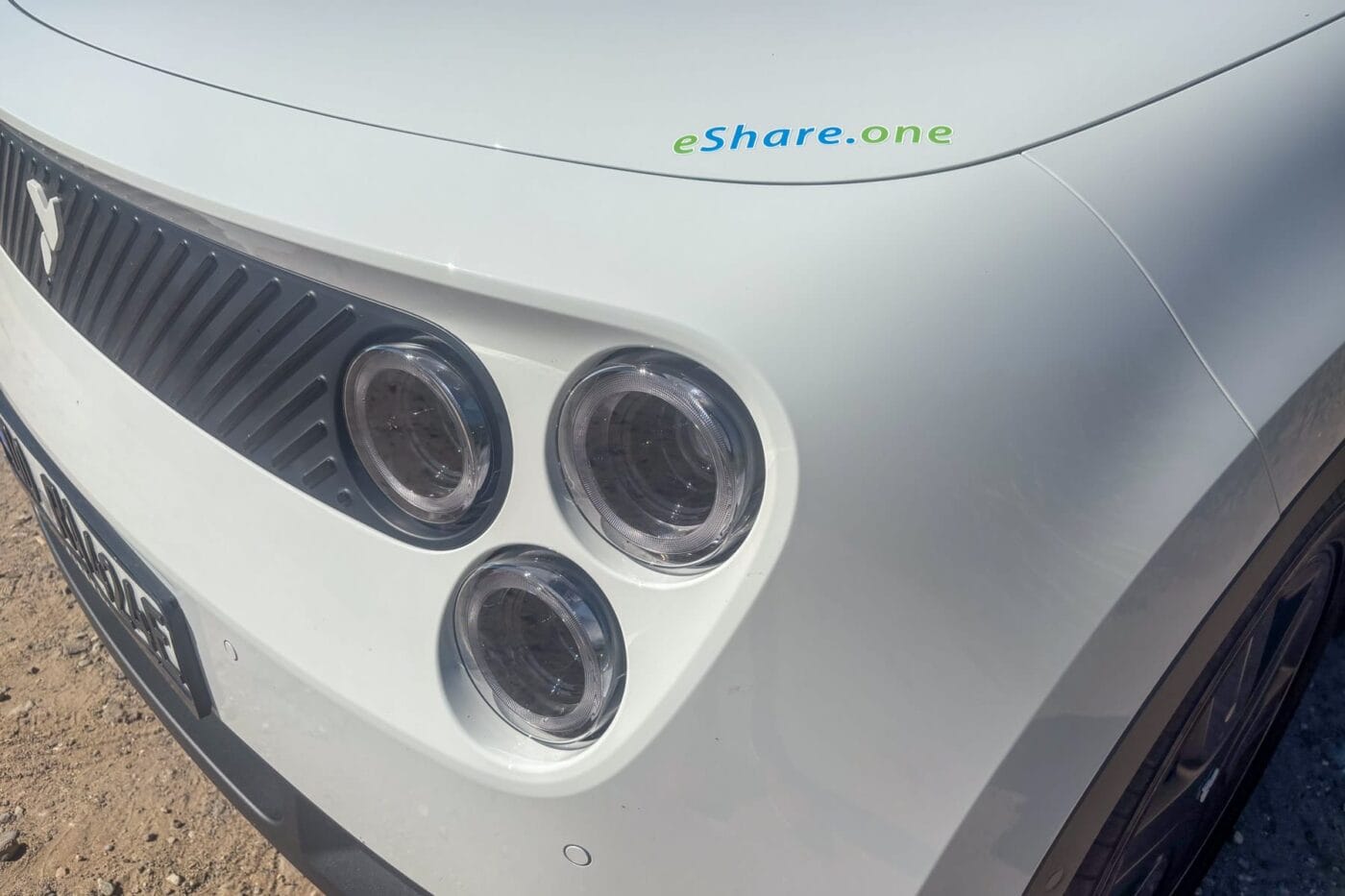
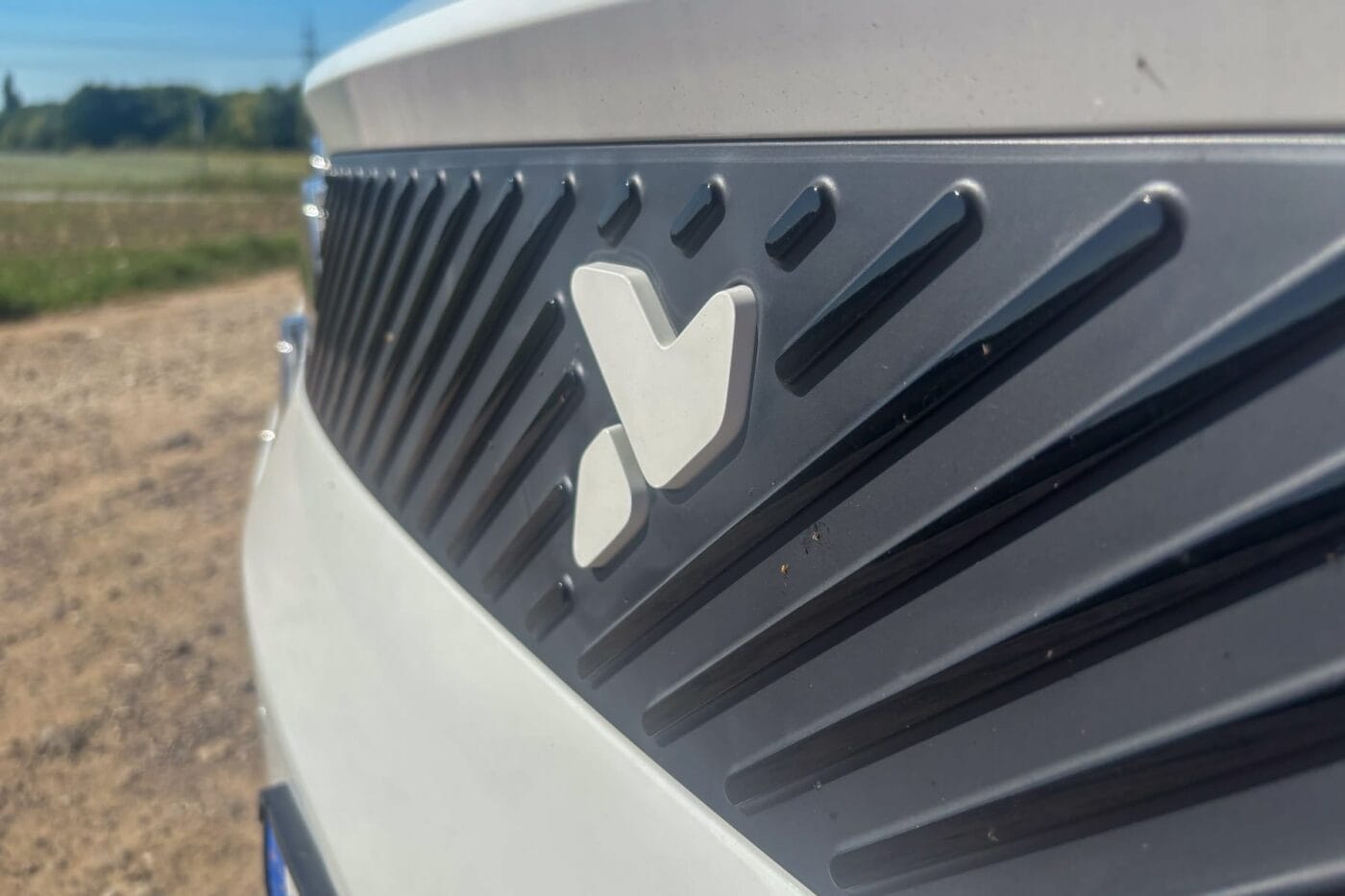
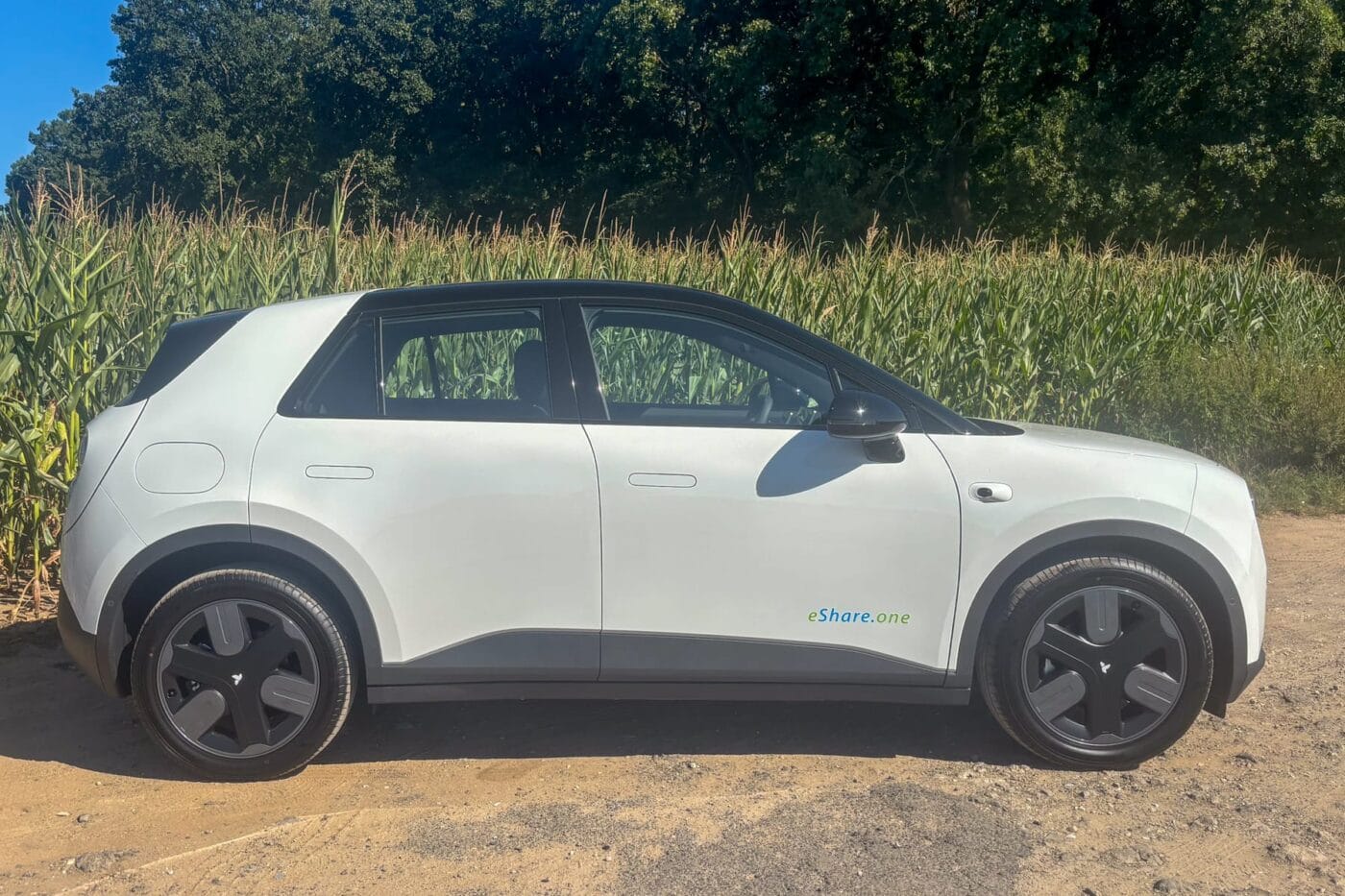
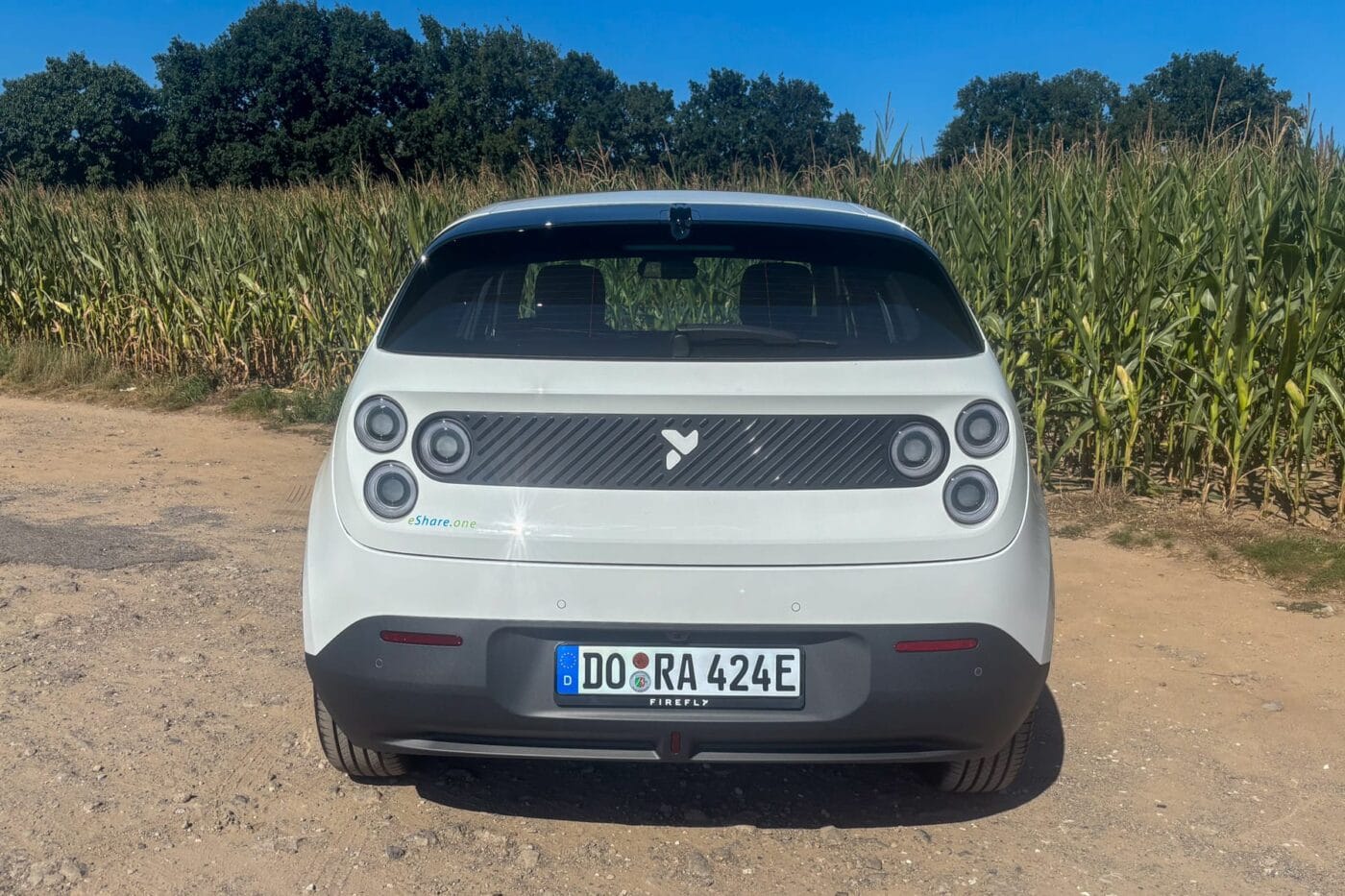
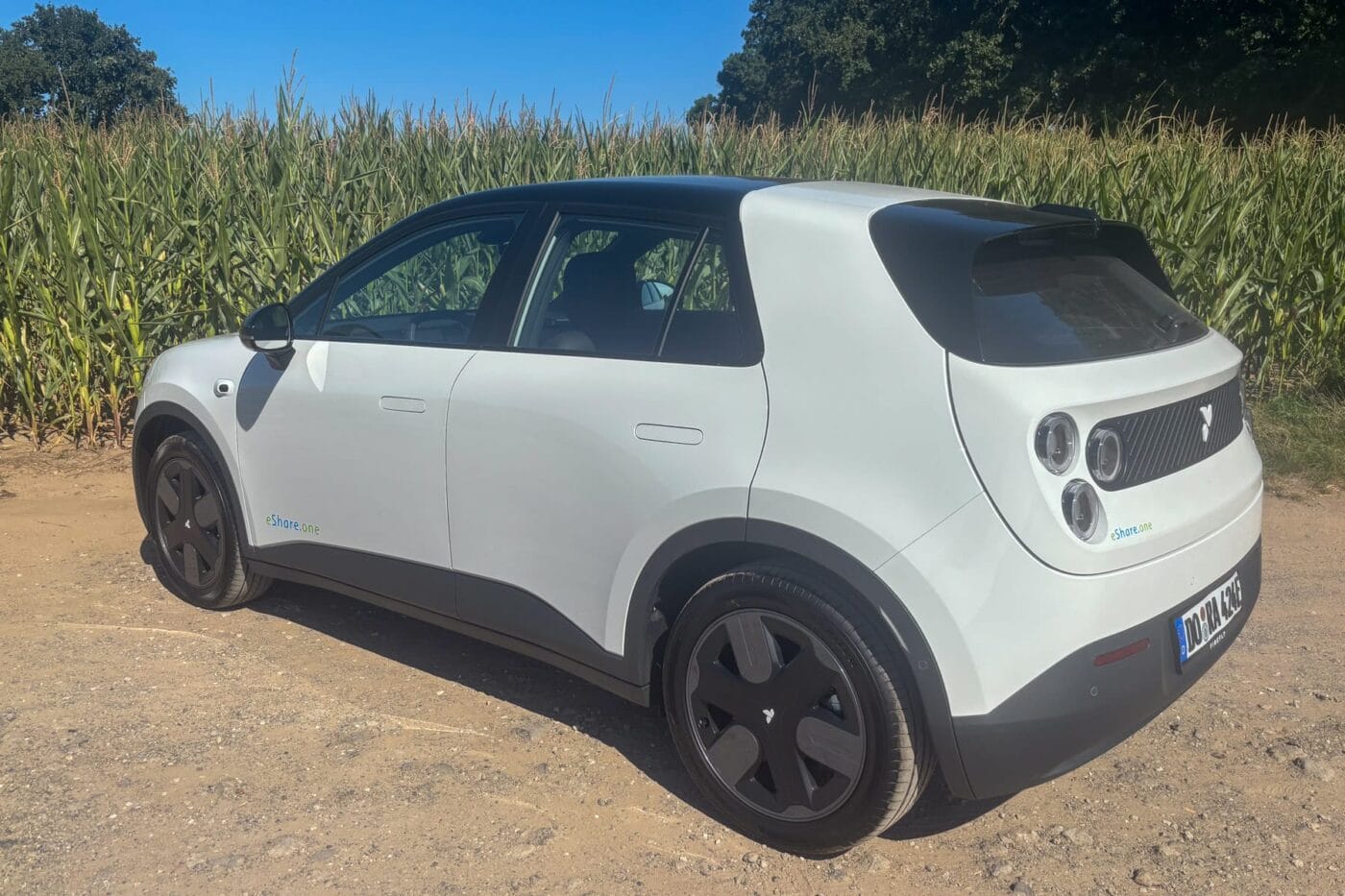
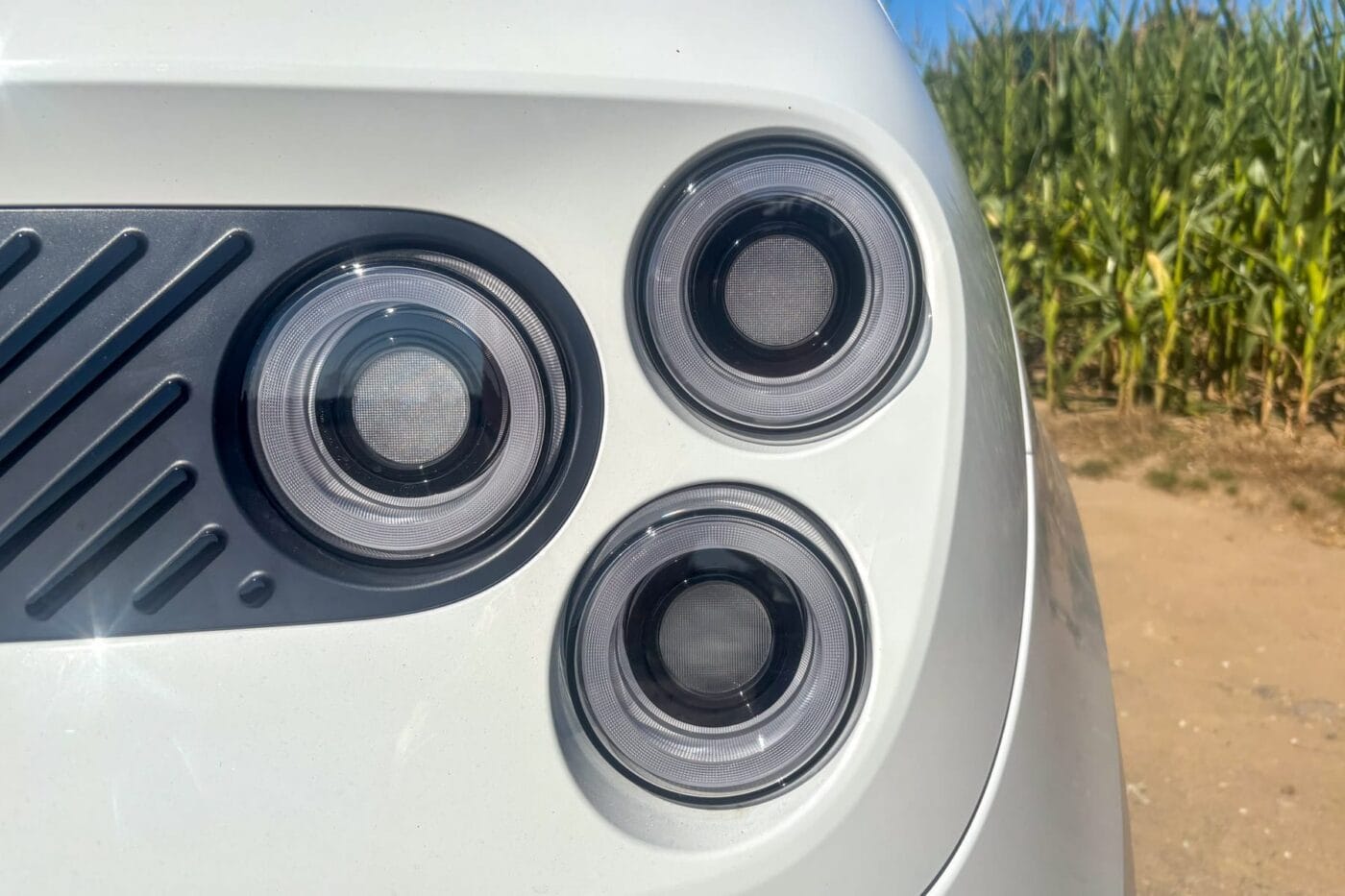
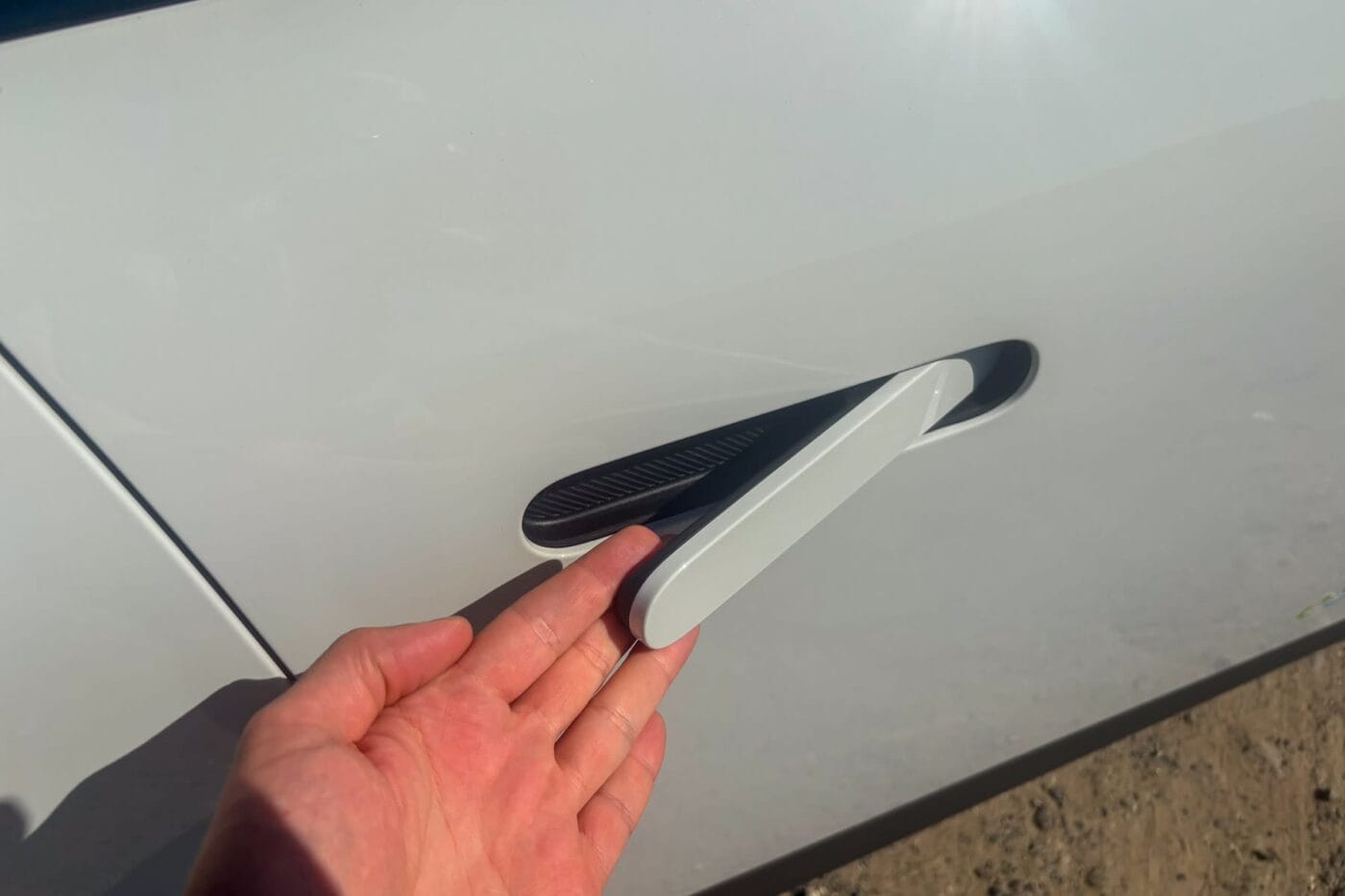
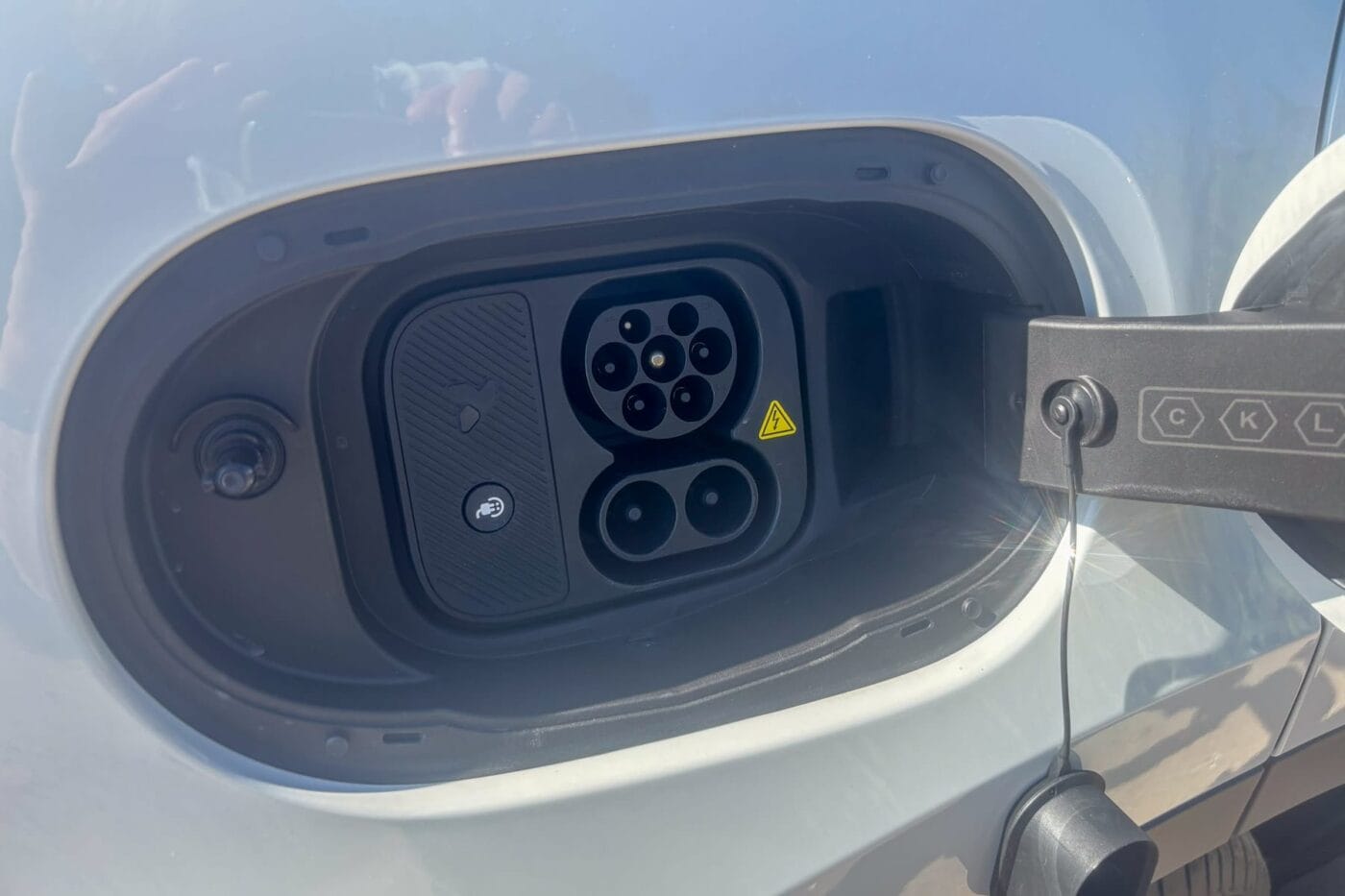
The drive system specifications are known: the electric motor on the rear axle delivers 105 kW, although the cockpit display shows that it can briefly deliver up to 119 kW. A 42.1 kWh LFP battery is integrated into the underbody, and, according to Chinese registration data, is supplied by Sunwoda.However, reports suggest that Sunwoda is only responsible for assembling the battery pack. The cells are supplied by Nio’s main battery partner, CATL.
42 kWh in a four-metre small car appears appropriate at first glance; even the Hyundai Inster is equipped with a pack of this size in its entry-level version priced from 23,900 euros. A larger option – such as the 49 kWh battery available for the Inster – is not offered in the Firefly. Moreover, Nio’s familiar battery-swap system is not yet available in Europe, as there are currently no suitable stations for small-car packs. By comparison, the 75 and 100 kWh batteries in larger Nio models not only provide significantly greater capacity but are also physically much larger than the unit in the Firefly. Until compatible swap stations are established, conventional charging will remain the only option.
Low consumption results in high range
According to WLTP, the 42 kWh battery enables a range of up to 330 kilometres (470 kilometres in the WLTP city cycle). During testing, these values proved realistic. On city and country roads, the consumption display indicated 11 to 12 kWh/100 km, while at 100 kph on the motorway the on-board computer showed around 13 kWh/100 km. At higher speeds, air resistance becomes more noticeable: at 130 kph, consumption reached 16–17 kWh/100 km. In summer, you need to drive at the maximum speed of 150 kph (up to 155 kph according to the speedometer) almost continuously to bring consumption above 20 kWh/100 km. Seasonal effects remain to be seen, particularly regarding the influence of heating and the LFP battery’s behaviour in winter.
For predominantly urban use and short motorway stretches, a realistic average is 12–13 kWh/100 km, equating to a range of around 350 kilometres. At 130 kph, motorway range falls to about 260 kilometres, or around 180 kilometres between ten and 80 per cent state of charge. At a steadier cruising speed of 110–120 kph, more than 200 kilometres between charging stops should be achievable.
During charging, the Firefly in our test closely matched the manufacturer’s specification of 30 minutes to charge from ten to 80 per cent. With a peak power output of 91 kW at 15 per cent state of charge, the Firefly charges slightly faster than a Hyundai Inster or Mini Cooper E, especially in the lower range, reaching 50 per cent in under 13 minutes. From around a 50 per cent, however, the Hyundai, with a similarly sized battery, has a slight advantage, while the Firefly takes significantly longer to reach 80 per cent. Overall, the Inster and Firefly remain almost equal across the full charging curve, with only minor differences in the final stages.
The Firefly’s software now provides efficient route planning, including charging stops, and performs particularly well compared with Hyundai systems. At first glance, the system suggests sensible charging stations and displays distance, expected charging time and planned remaining range upon arrival. Unlike the Hyundai system, which plans charging stops rather conservatively, the Firefly may send its drivers to a charger with as little as 30 kilometres of range remaining. Additionally, the system provides occupancy information for charging points directly via the touchscreen.
The disadvantage: The Firefly often schedules very long charging stops of up to 49 minutes, intended to correspond to an almost full battery at a fast charger. However, the charging curve shows that several shorter stops would be more efficient. Drivers should not necessarily rely on the car’s planning and wait at the charger for nearly an hour; instead, it can be more effective to continue driving and, if needed, schedule an additional short stop.
Assistance systems reminiscent of Nio – as of 2023
As a small car with a 42 kWh battery, the Firefly is probably not the ideal long-distance vehicle, although driving on the motorway was by no means unpleasant. The chassis tuning is well executed. For a four-metre-long car, the Firefly sits firmly on the road, showing no instability at 130 kph. Springs and dampers maintain a high level of comfort without being too soft in corners. Rear-wheel drive without a front electric motor allows for a large steering angle, making the small turning radius ideal for city driving and parking. At the same time, manoeuvrability does not compromise straight-line stability on the motorway. In short: a successful compromise, not only for a small car! I already liked the chassis very much in other Nio test cars, and the same can be said for the Firefly.
The Firefly also draws inspiration from Nio in another area, but unfortunately, from an older version that Nio has long since updated. We are referring to the assistance systems, which beep as eagerly and loudly as we last experienced in Nio’s ET5 test in 2023. One kph too fast and the speed warning system beeps immediately – even if the cruise control is regulating the speed and not me as the driver. If the driver then looks at the speedometer display for too long (i.e. longer than what feels like a second), it beeps again – you are supposed to look back at the road. The system seemed to react even more sensitively when wearing sunglasses, as it cannot accurately detect the eyes and the direction of gaze. However, the sensors are no longer installed in an additional bump on the steering column, but are almost invisibly integrated into the cockpit display.
If Firefly detects roadworks, it also warns you and urges you to pay more attention. That is a good and helpful feature in itself. While useful, the system can become tiresome if it repeatedly interprets traffic cones as roadworks. Drivers may need to adjust settings in the menu to deactivate some alerts. In newer Nio models, such as the EL8 and EL6, software improvements have shifted the trigger threshold to a more practical range, reducing unnecessary alerts while keeping assistance active when genuinely needed.
Minimalist look with pros and cons
The Firefly’s connection to Nio is also visible in the interior. The cockpit is sober and minimalist, with a large central touchscreen a small instrument display behind the unusually shaped steering wheel. The control buttons on the steering wheel are familiar from the larger Nio models. In the centre, there is a small compartment in the adjustable armrest, a smartphone charging cradle and a cup holder – two would be better here, but space is limited in a small car. In our test, a one-litre PET bottle just about fit into the door storage compartments – with a bit of squeezing. With a glass or metal bottle, it probably depends on the exact dimensions whether it fits or not. Nio has omitted additional storage compartments in the centre console, as found in the Hyundai Inster, which may inconvenience some users. In my opinion, the minimalist look has been taken a little too far, because I find it very convenient to have an easily accessible compartment where I can quickly put my wallet or keys when getting in.
The Firefly does provide storage, but it is hidden. The first aid kit is stowed under the fold-up passenger seat, and there are practical storage compartments under the rear seat, which also folds up. However, these are more suitable for items that are rarely used or for specific loading before a holiday trip. Unfortunately, these ‘hidden features’ are not helpful when it comes to storing smaller everyday items. Nevertheless, it is nice to see that the available space is being utilised and made available to customers. A non-foldable seat would certainly have been cheaper.
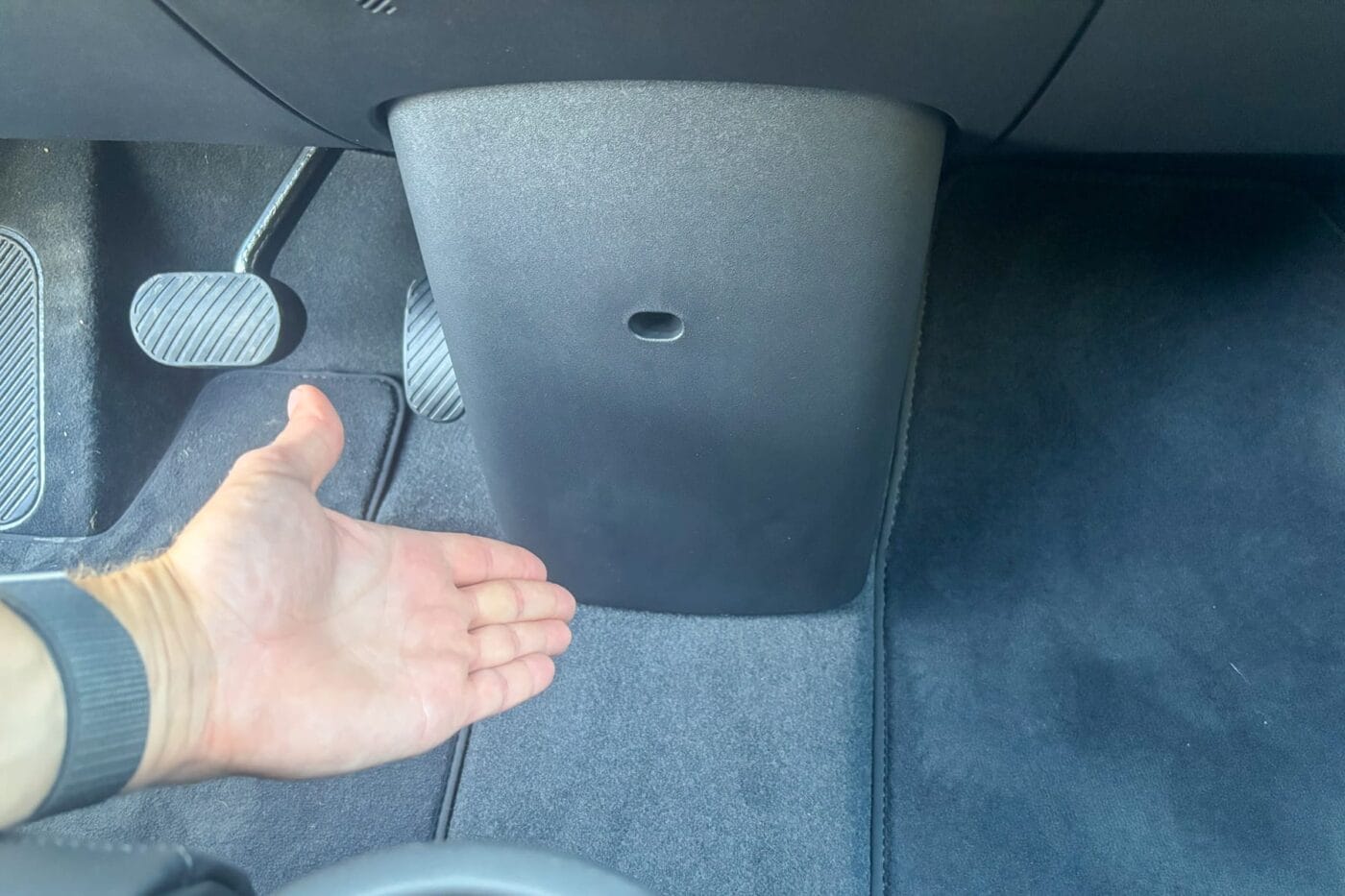
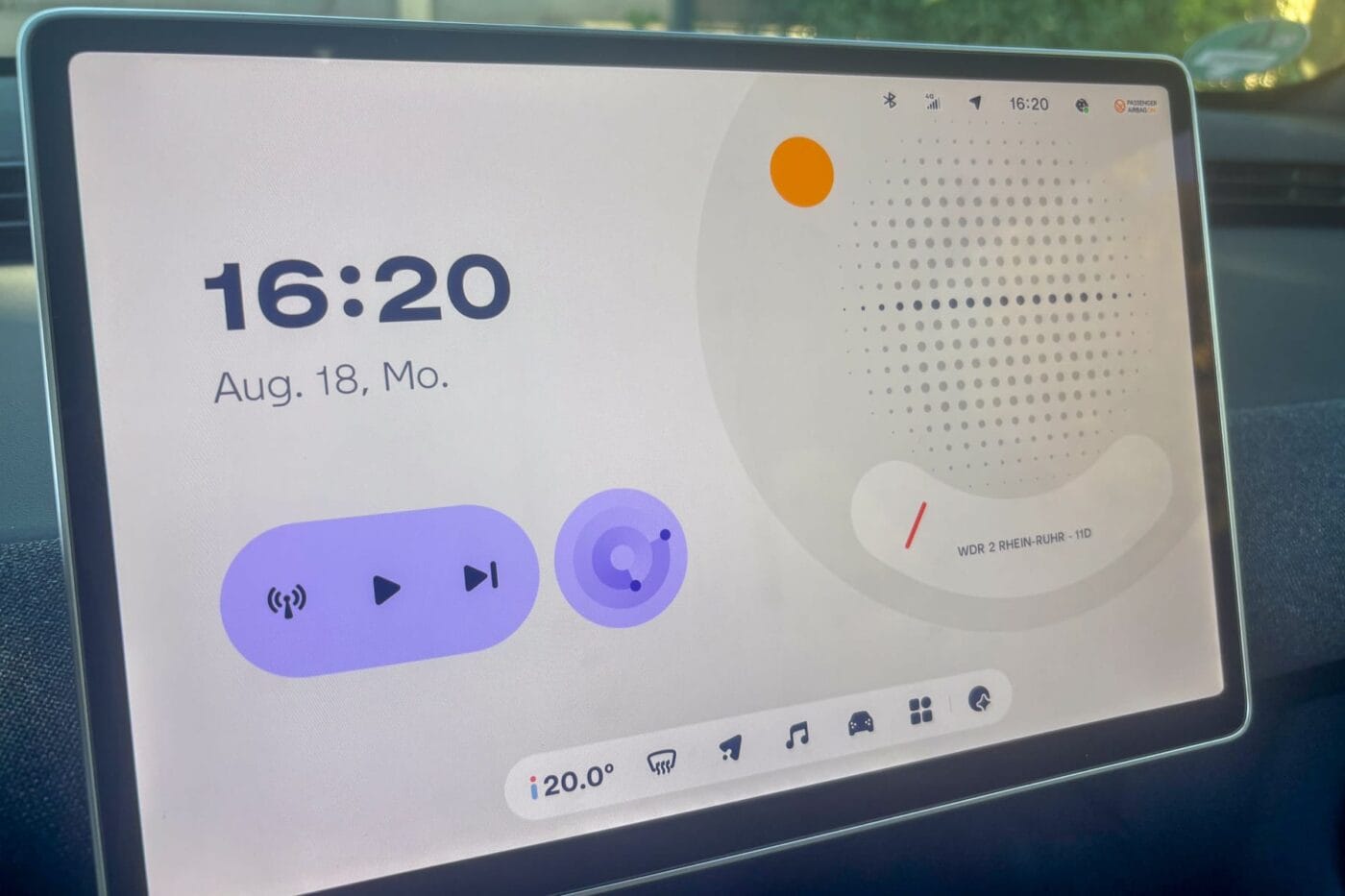
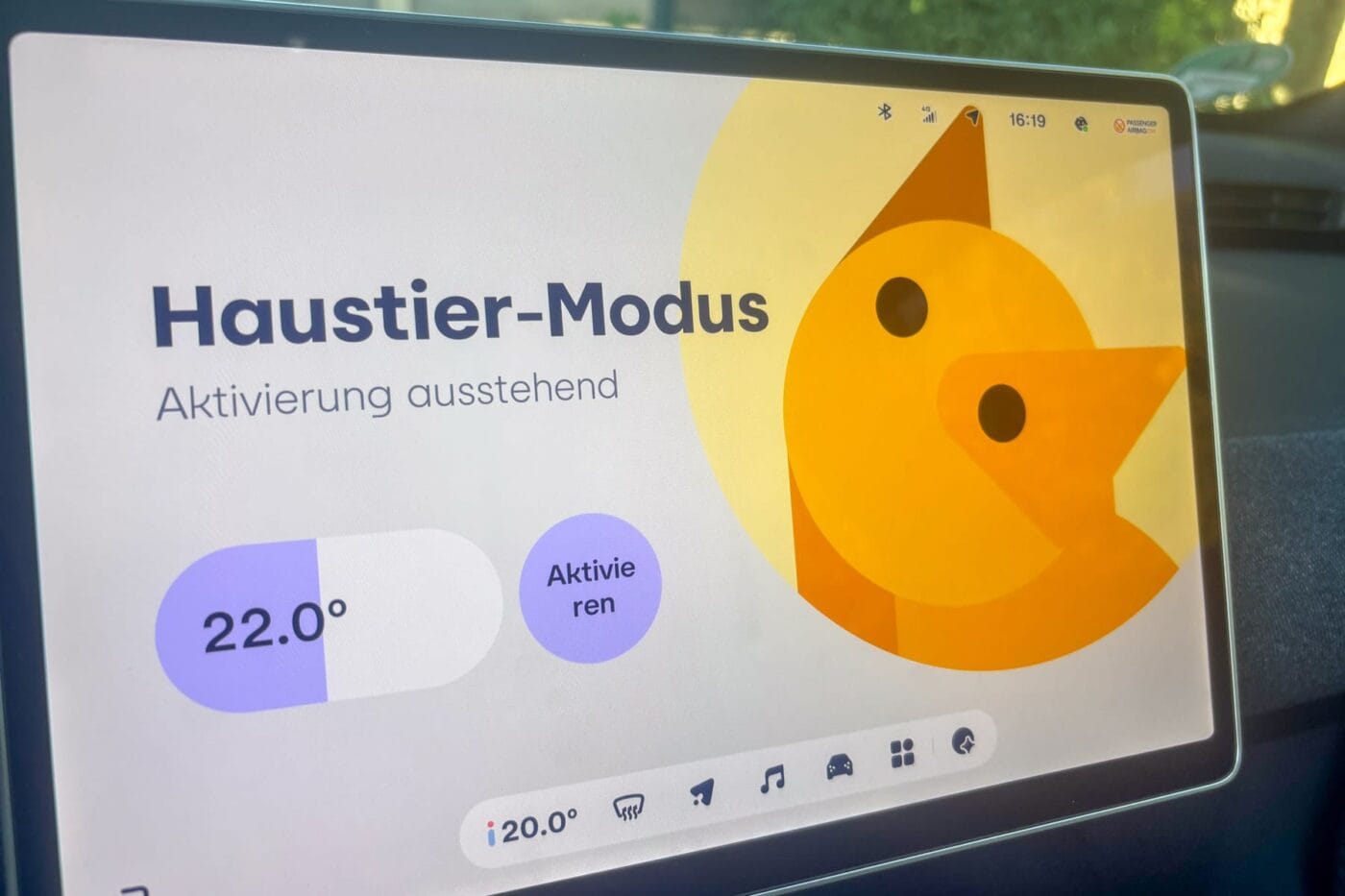
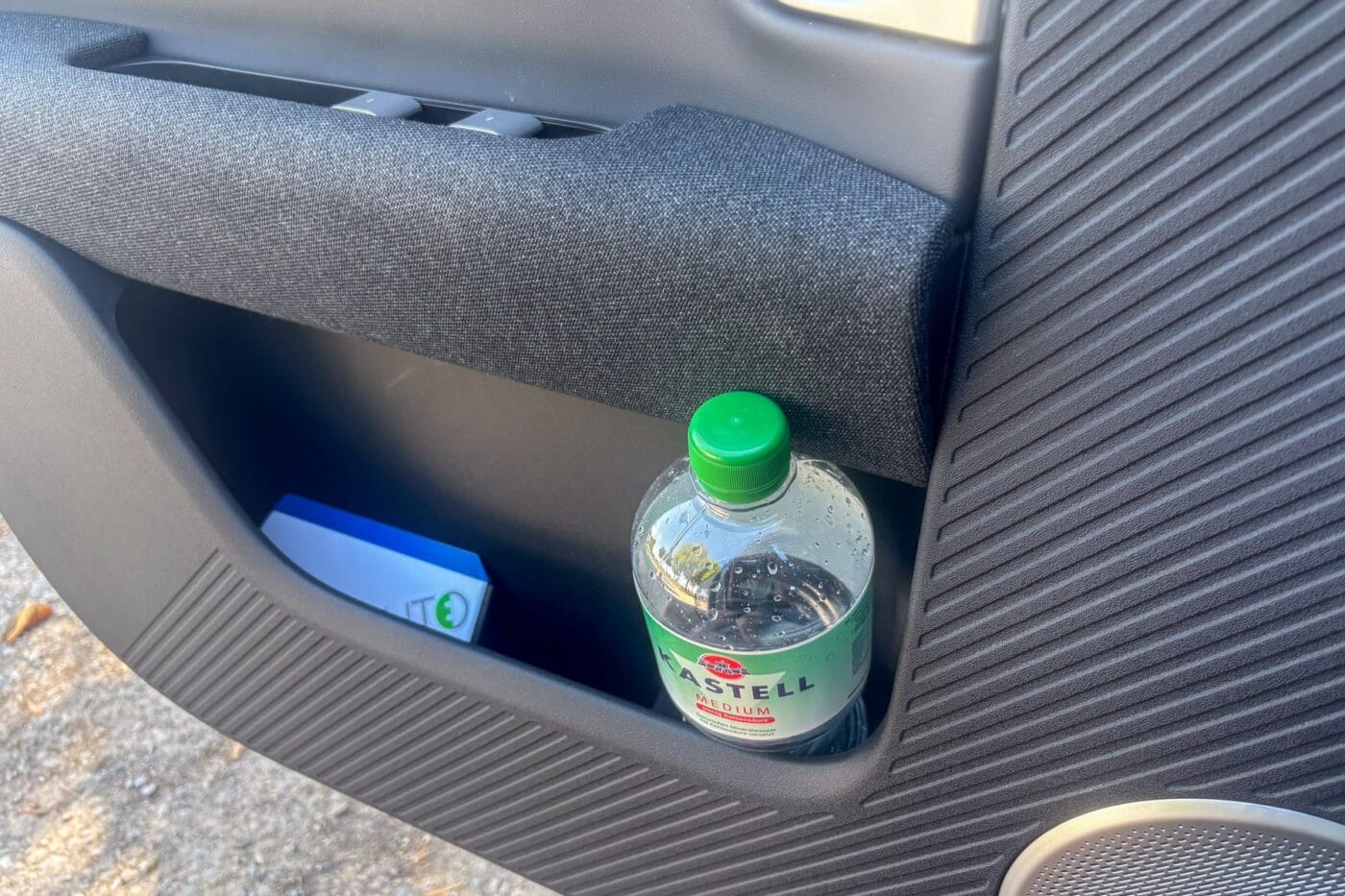
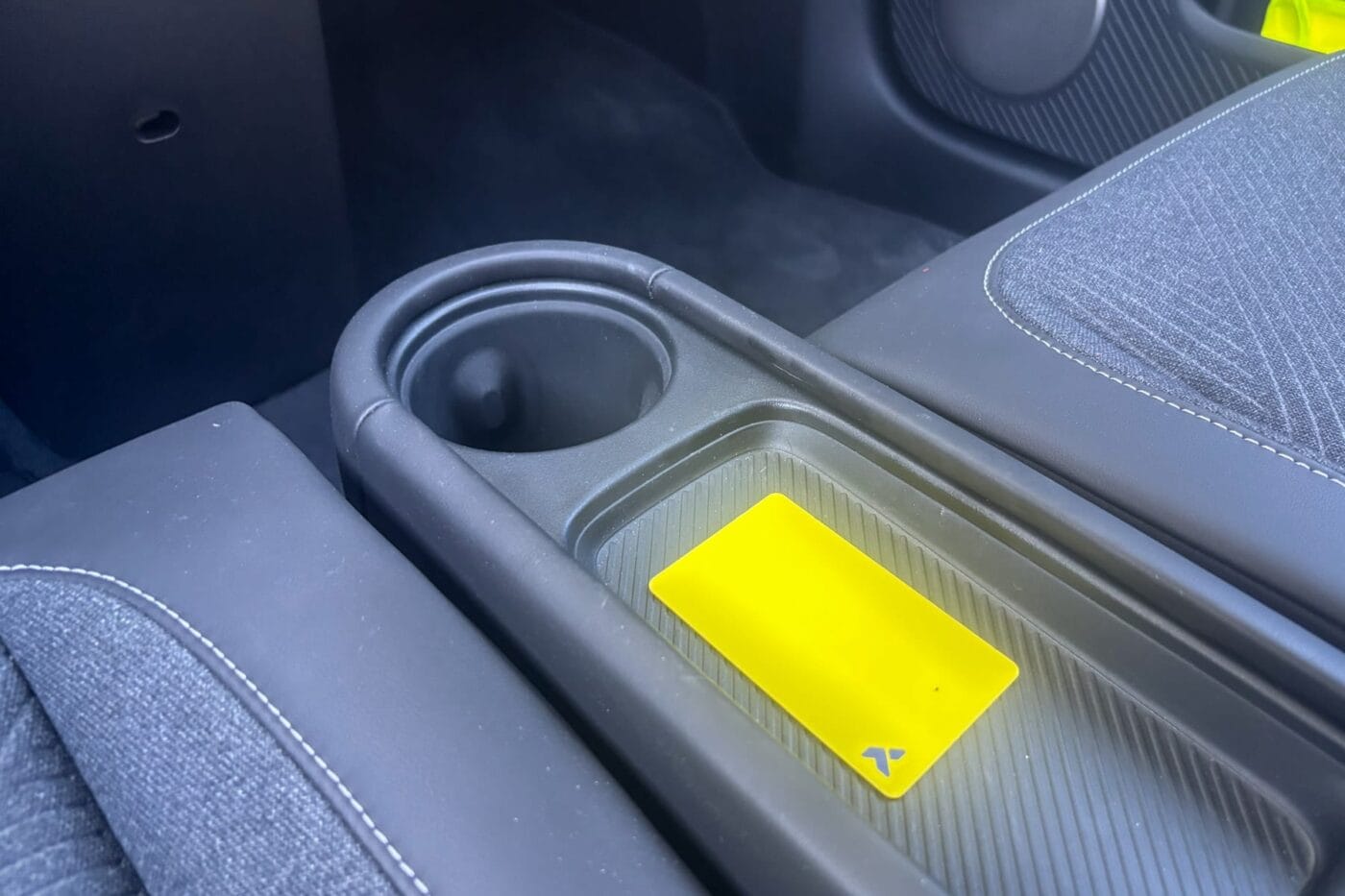
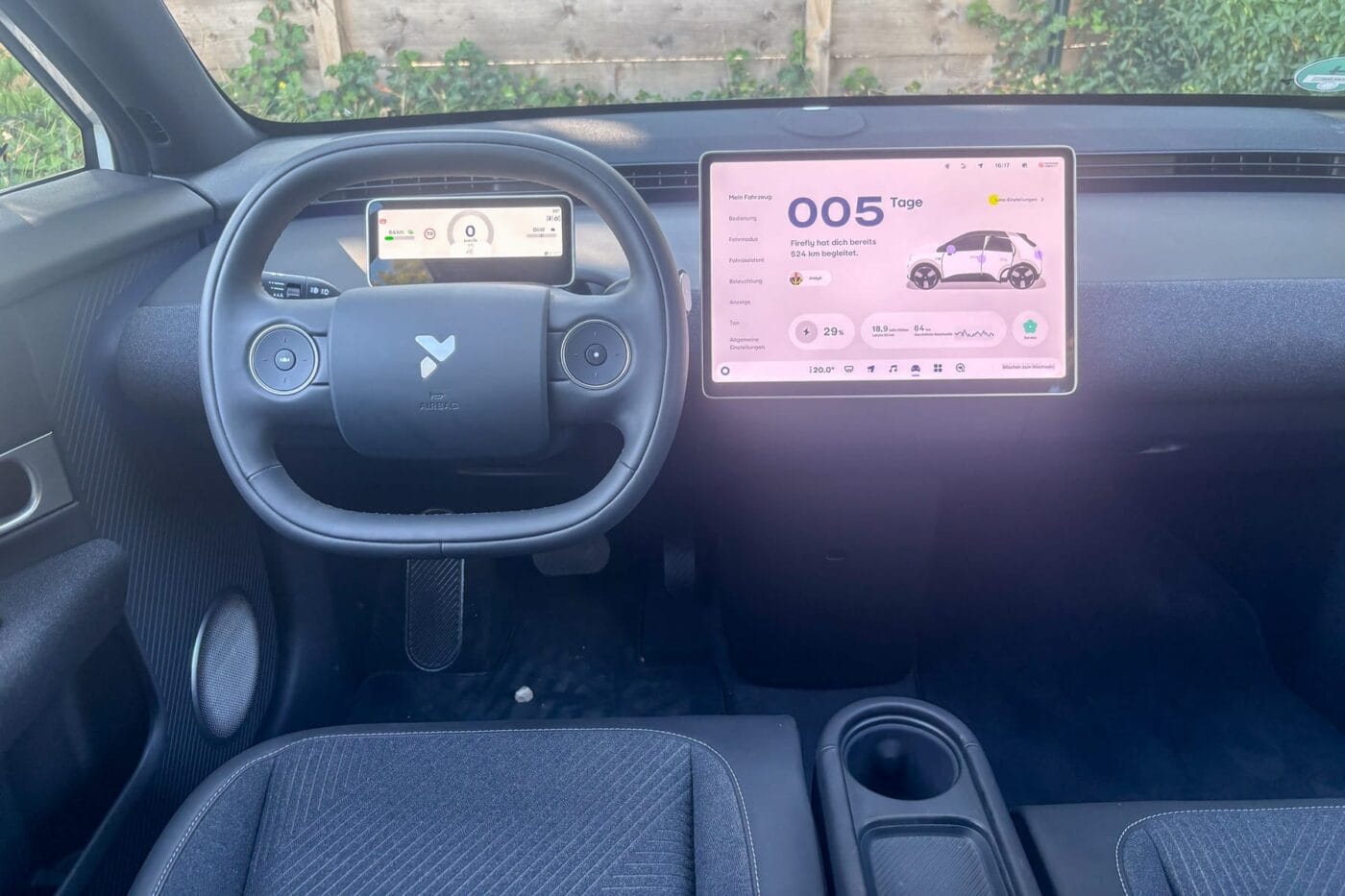
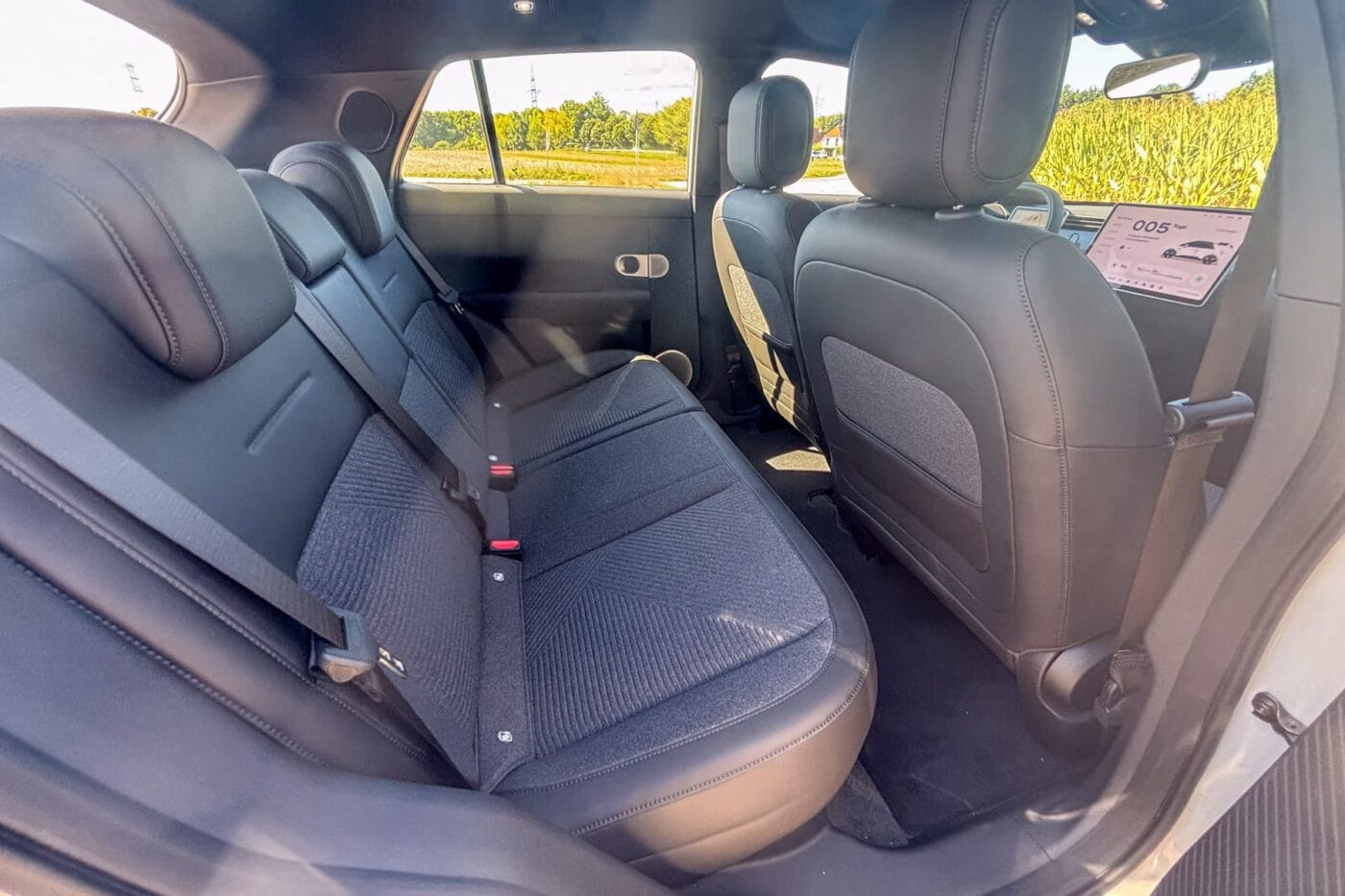
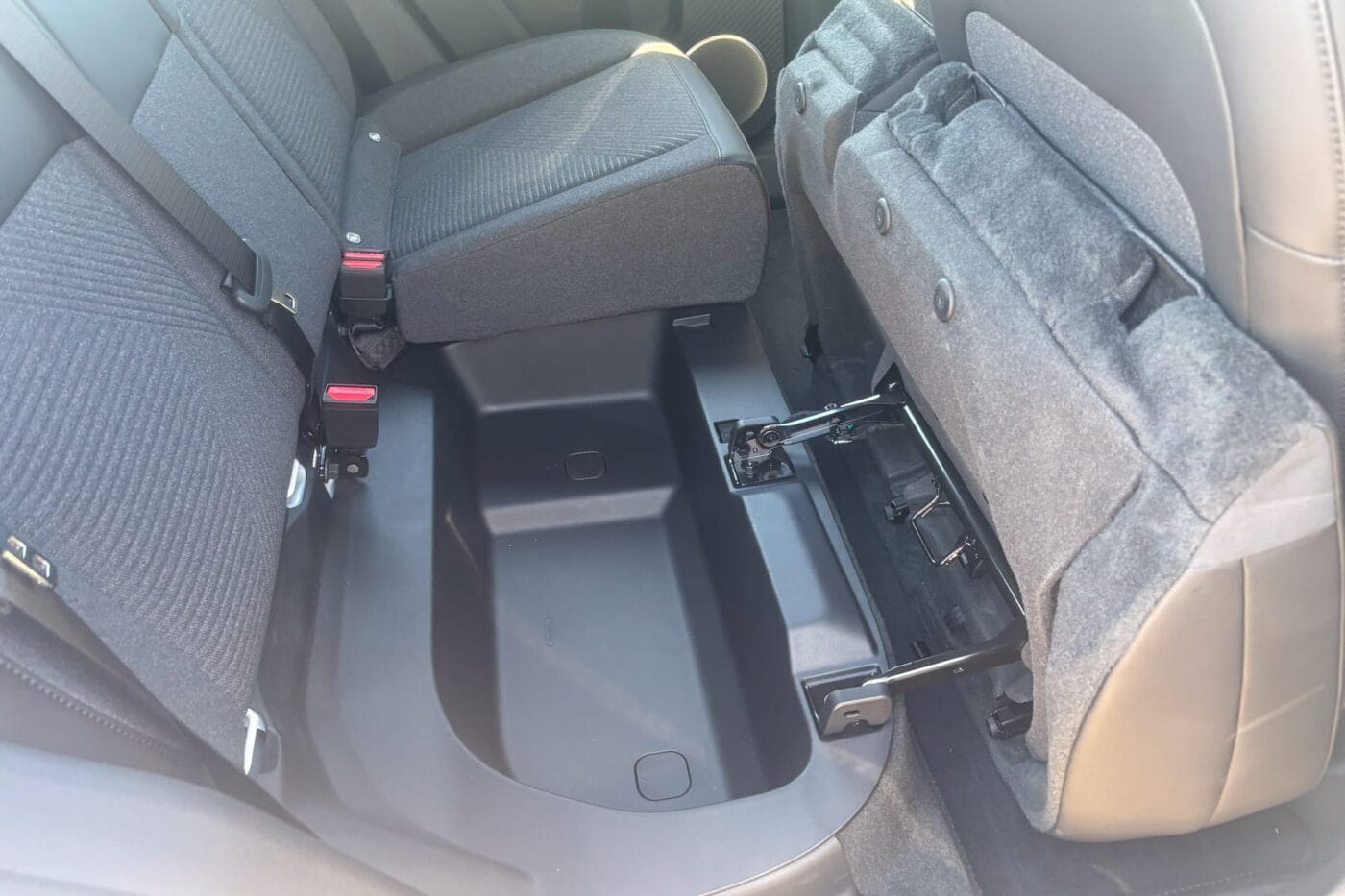
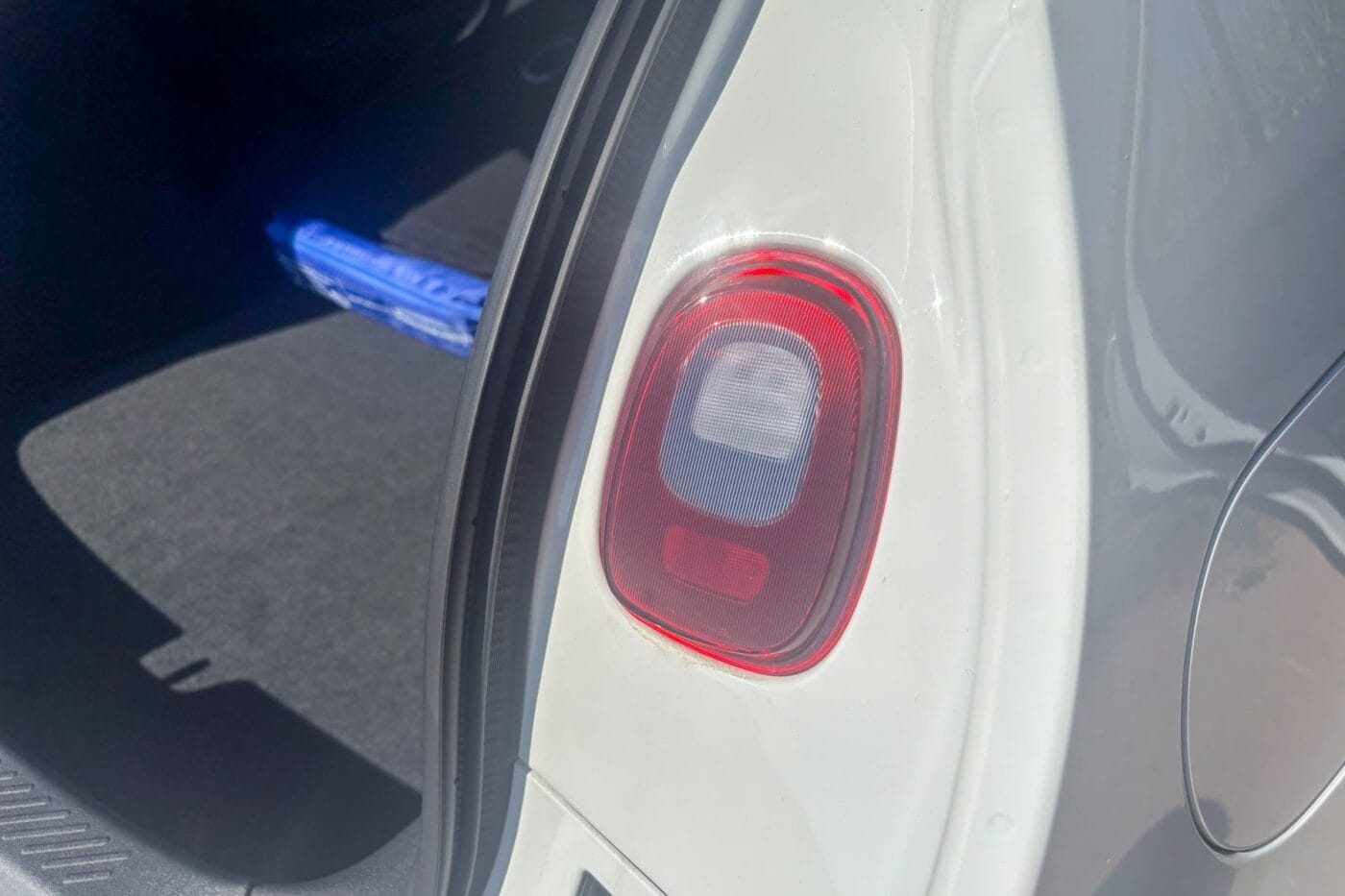
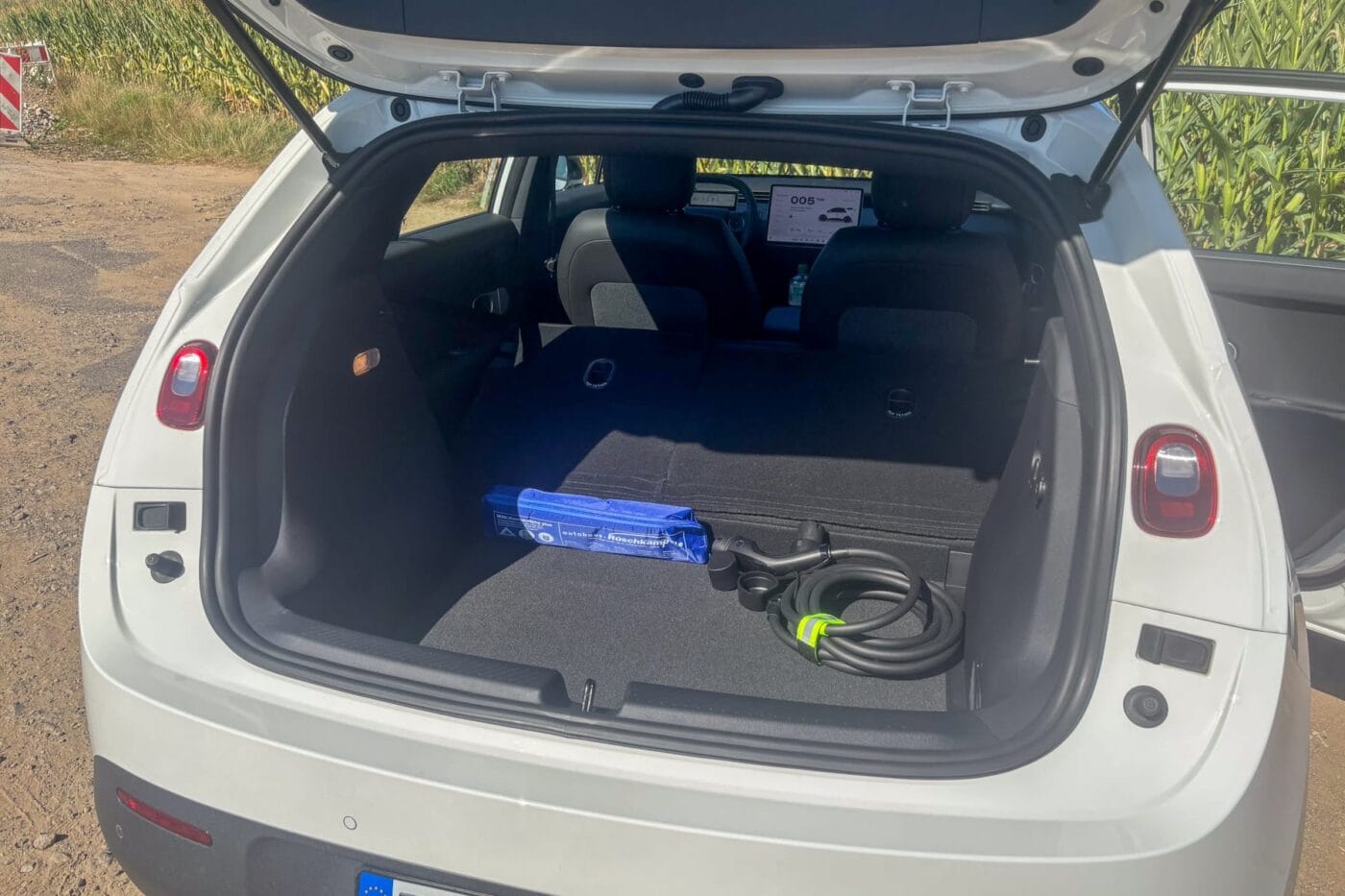
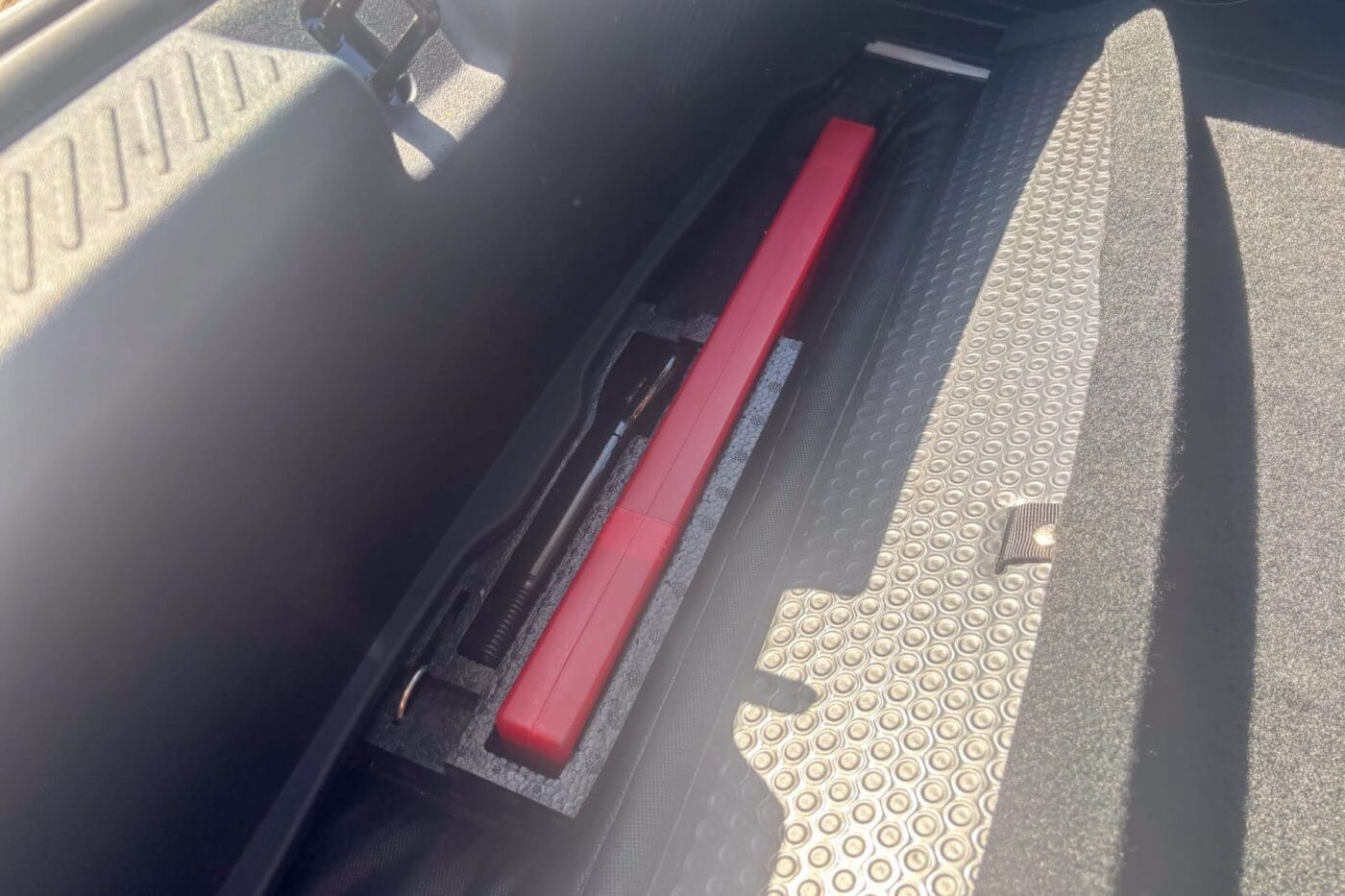
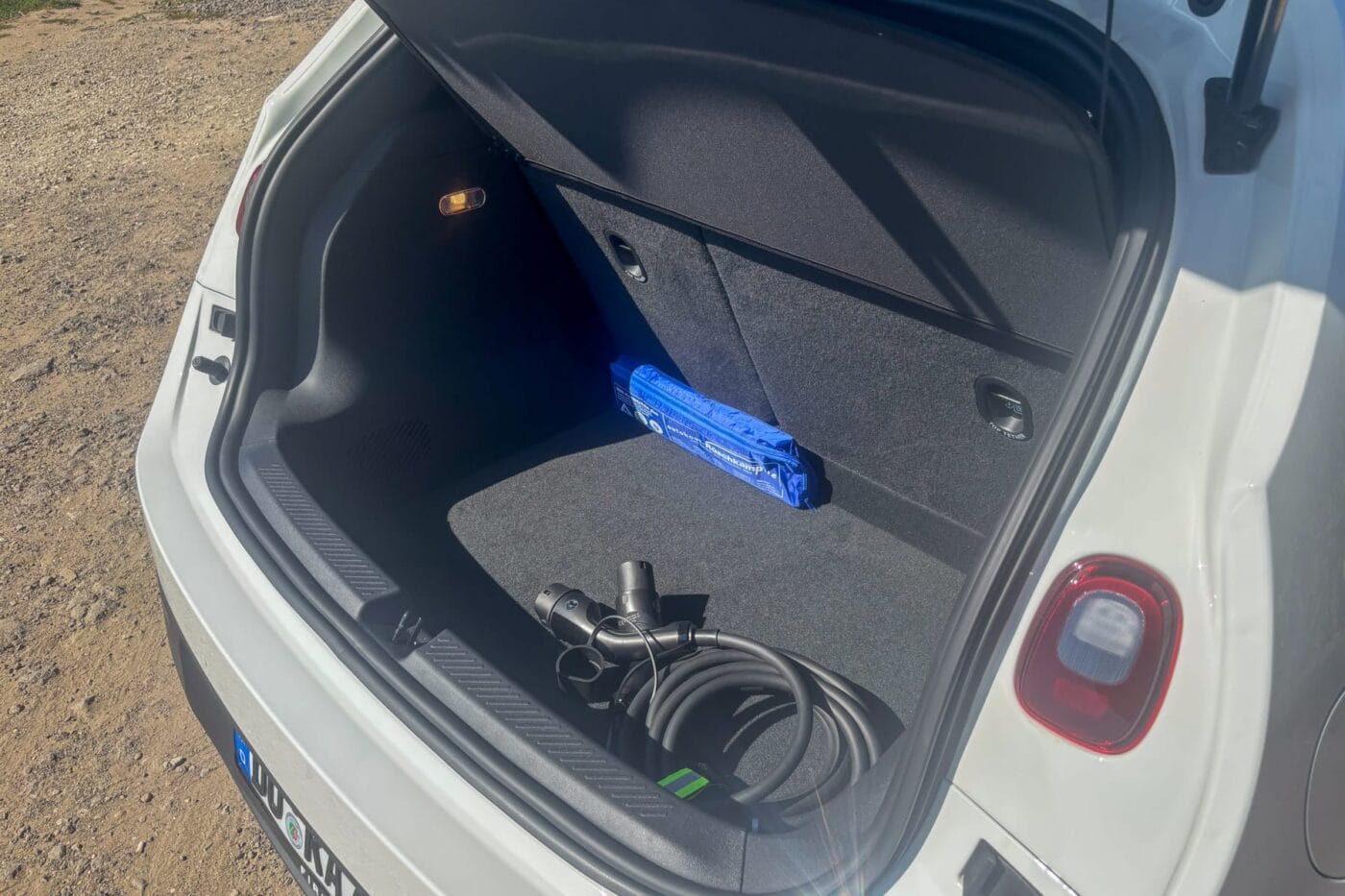
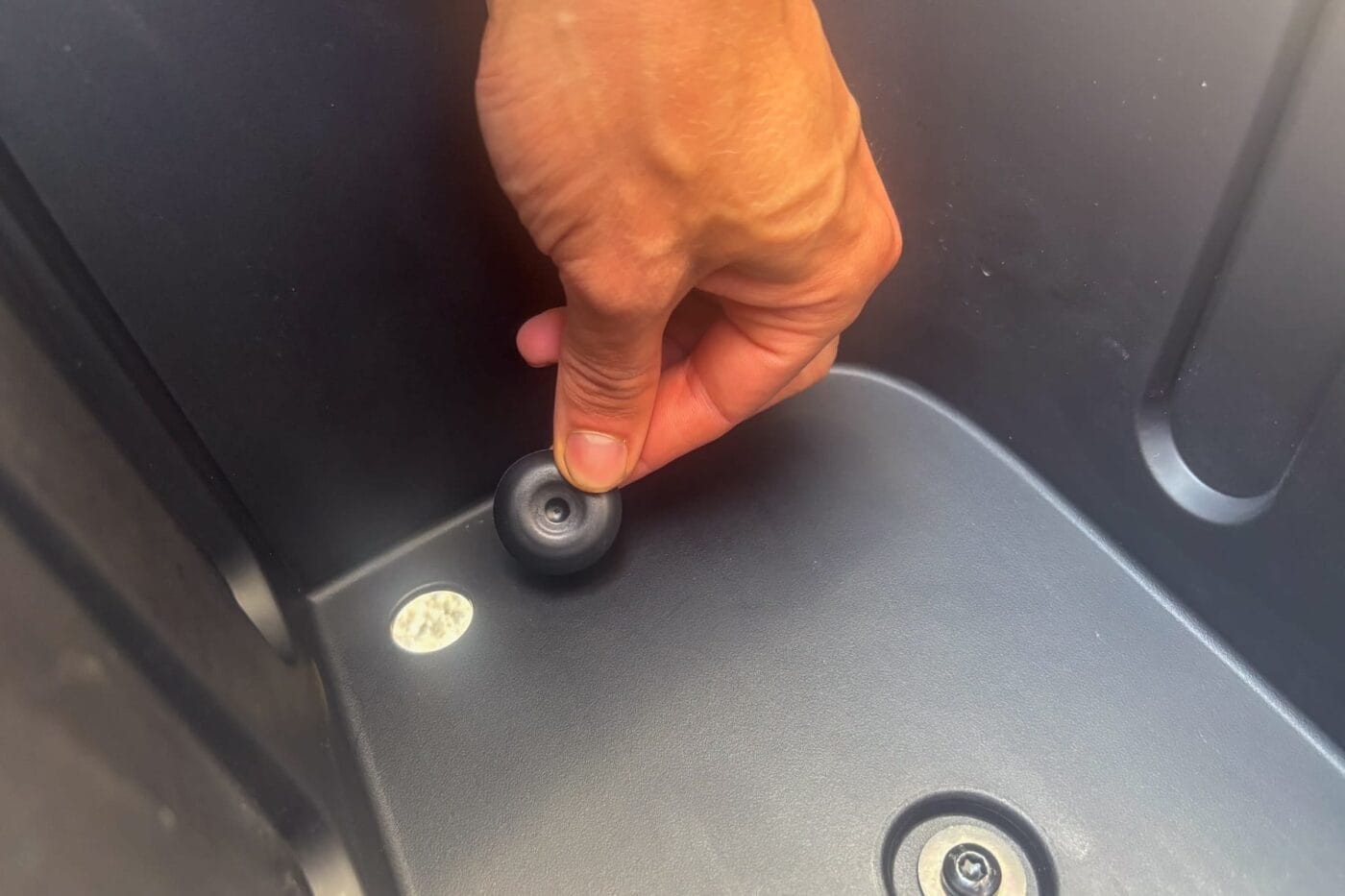
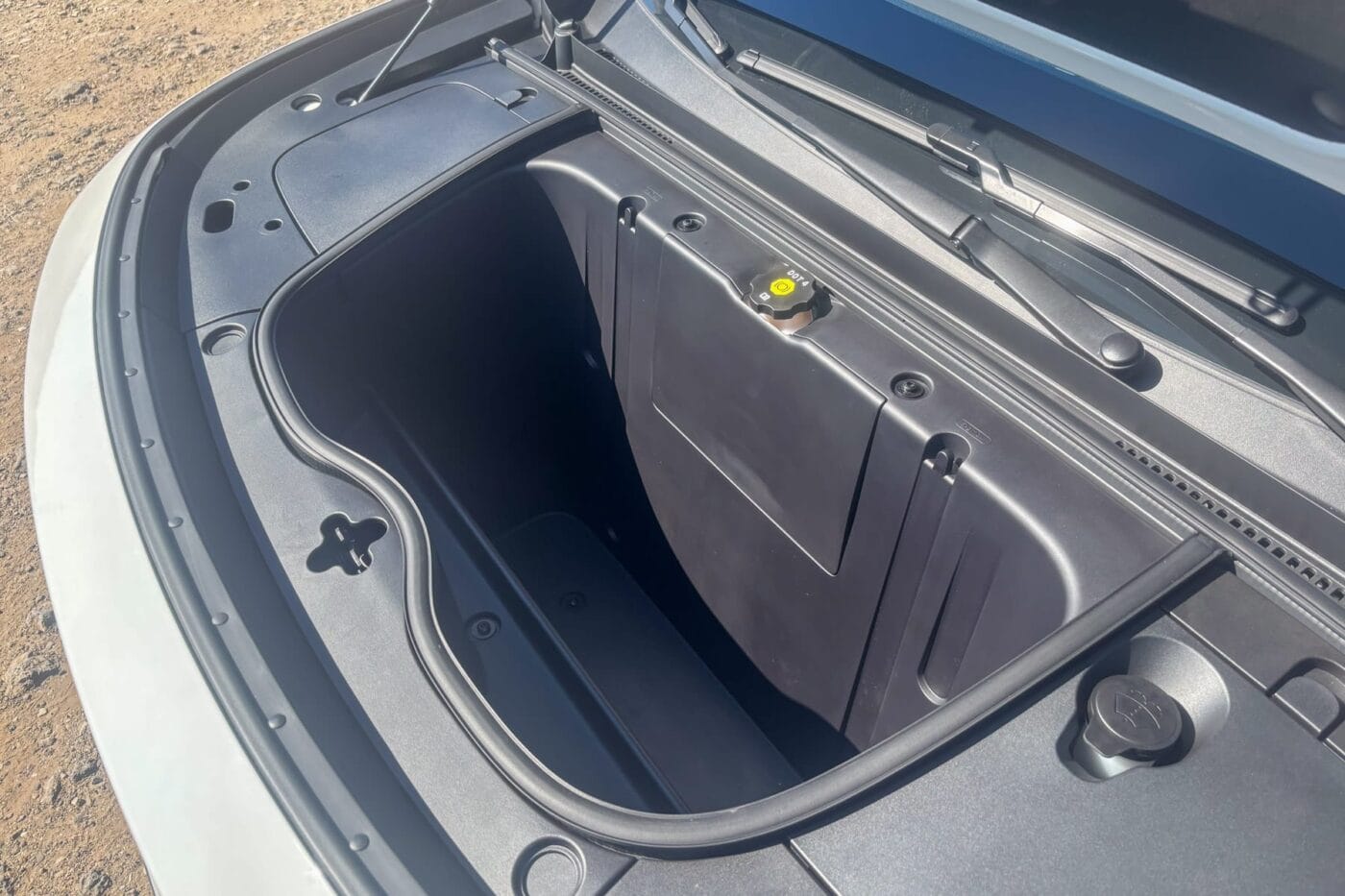
That said, it must be acknowledged that the interior is otherwise well designed. The materials appear to be of high quality, and the fabric covering on the dashboard almost creates a living room atmosphere, rather than the hard-plastic feel common in small cars, even though the test vehicle was fully grey. Even the door panels are made of soft, foamed plastic, whereas significantly more expensive test cars, such as the VW ID. Buzz GTX, which costs more than €80,000, feature hard plastic. With the adjustable ambient lighting around the dashboard, the cockpit almost appears to float in the dark – a nice design feature.
The controls are also clearly and intuitively laid out. The design and font are deliberately different from Nio, likely targeting a younger audience. This is successful in itself, and anyone who has ever used a tablet or a modern touchscreen system in a car will quickly find their way around the Firefly. There are also features such as a pet mode, which is often missing in other (even more expensive) electric cars. Even if you can start the air conditioning via an app, there is no display to show that the air conditioning is activated, and that the driver will be back soon.
The Firefly is not designed to be cheap
Some interior details indicate that cost minimisation was not the primary goal. The materials used could allow for price reductions, and some design elements could be simplified. For example, the rear lights pivot with the boot lid, requiring a second pair of lights to illuminate when the boot is open. The front air vents for the air conditioning are all integrated into a strip at the base of the windscreen – stylish, but difficult to reach with your arm. That means that the air vents cannot be adjusted manually, but only via the touchscreen and small servomotors. This does allow for an (admittedly quite pleasant) automatic function, in which the air flow constantly switches from left to right and back again. Mechanical, manually adjustable air vents would probably have cost only a fraction of the price.
Although the Firefly shares its name with the brand, further models are planned. The debut model is more elaborate and higher-end, leaving room for a simpler, more affordable variant in the future.
Storage space at the front and rear
This could possibly be an even smaller car, as the Firefly offers a surprising amount of space despite its four-metre length. Under the bonnet, there is a 92-litre, very deep frunk with a storage compartment and bag hooks to prevent items from flying around. The frunk is more than large enough for the charging cable. A nice detail: the frunk also has a coverable drain through which water can run off. This means, for example, that you can keep drinks or other purchases cool with ice cubes, and the melted water can drain away without any problems.
The rear boot is much more conventional, with a slight slope and no flat loading sill. Under the floor, a small flap houses the warning triangle and towing eye, but no further sub-trunk – that’s where the motor is located. VW will probably include a compartment for a crate of drinks in the ID.2, at least that’s what was shown in the study. With 404 litres in the standard configuration, the capacity in this class is more than respectable! When the rear seat backs are folded down in the Firefly, the load volume increases to over 1,200 litres. However, this does not create a flat loading area, as there is still an edge at the rear seat backs. However, given the storage volume in a small car, this is a forgivable drawback.
Conclusion
, though its styling – with three round lights on each end – may not appeal to all. It is not the cheapest small electric car; a 42 kWh battery in this segment is available elsewhere at significantly lower cost. If we transfer the Dutch price of €29,900 to the Germany, there are 42 kWh batteries in this segment available for significantly less money. The Firefly certainly does not set new standards in terms of drive and price.
Nevertheless, it should be noted that not all cars (even in the small car segment) focus purely on value for your money – Mini comes to mind. The Firefly, with its minimalist interior, good workmanship and high-quality materials, combined with drive technology that is perfectly adequate for many purposes, is sure to find its fans. However, Nio cannot draw on the iconic brand heritage and design of a Mini, which is why some sales may have to be made on the basis of price. It therefore remains to be seen how Nio will price the model in this country and on what terms the Firefly vehicles will actually be available for leasing or from subscription providers.

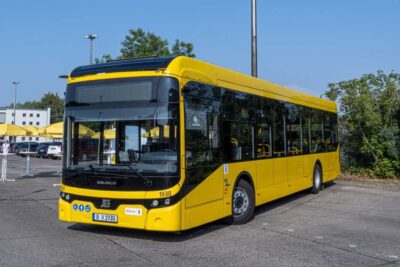
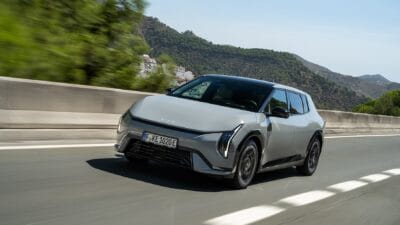
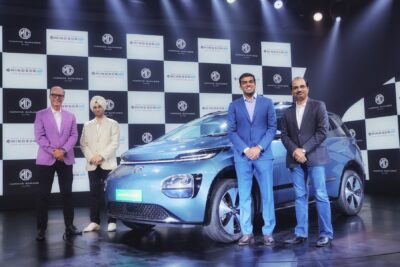
0 Comments